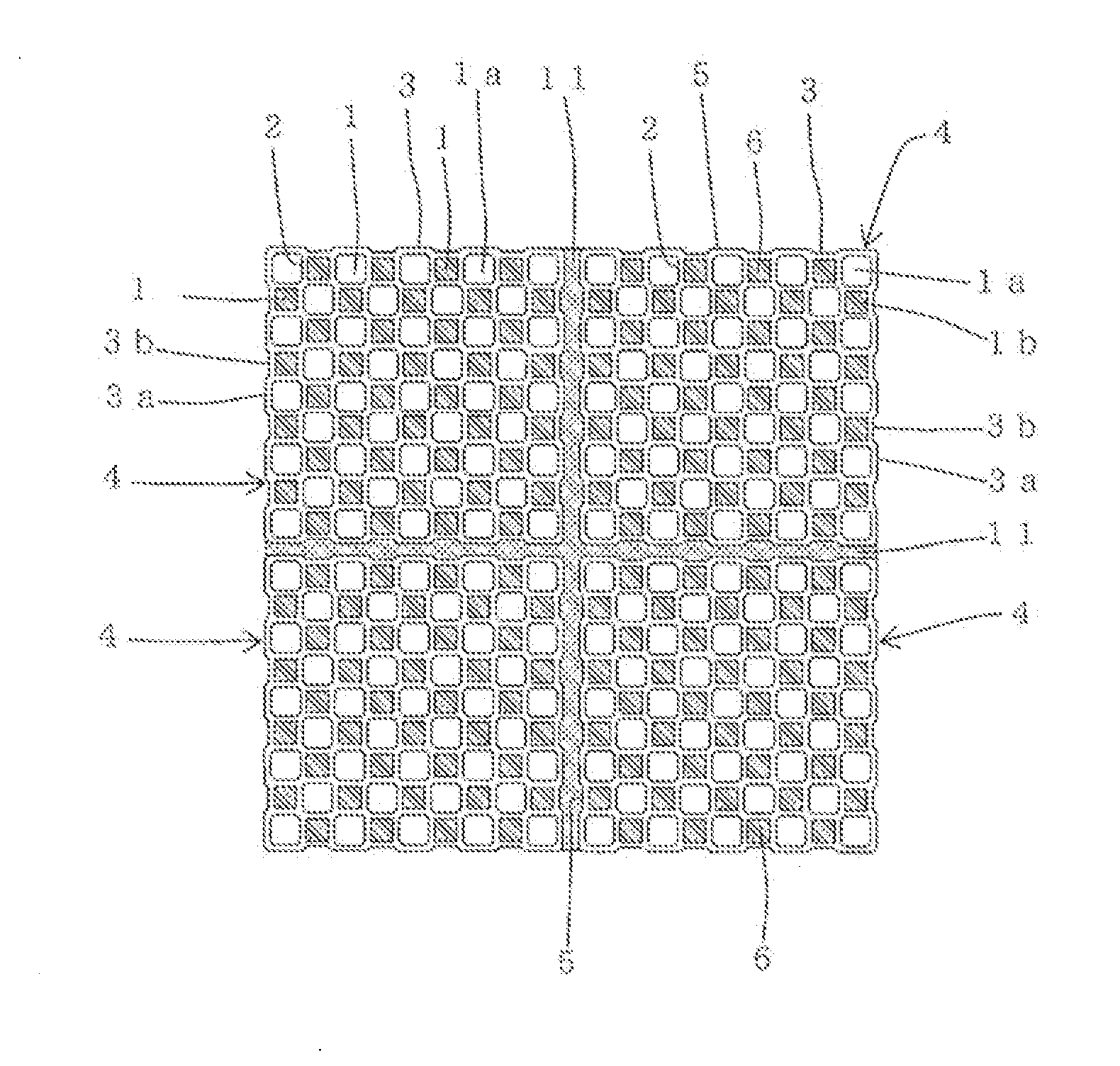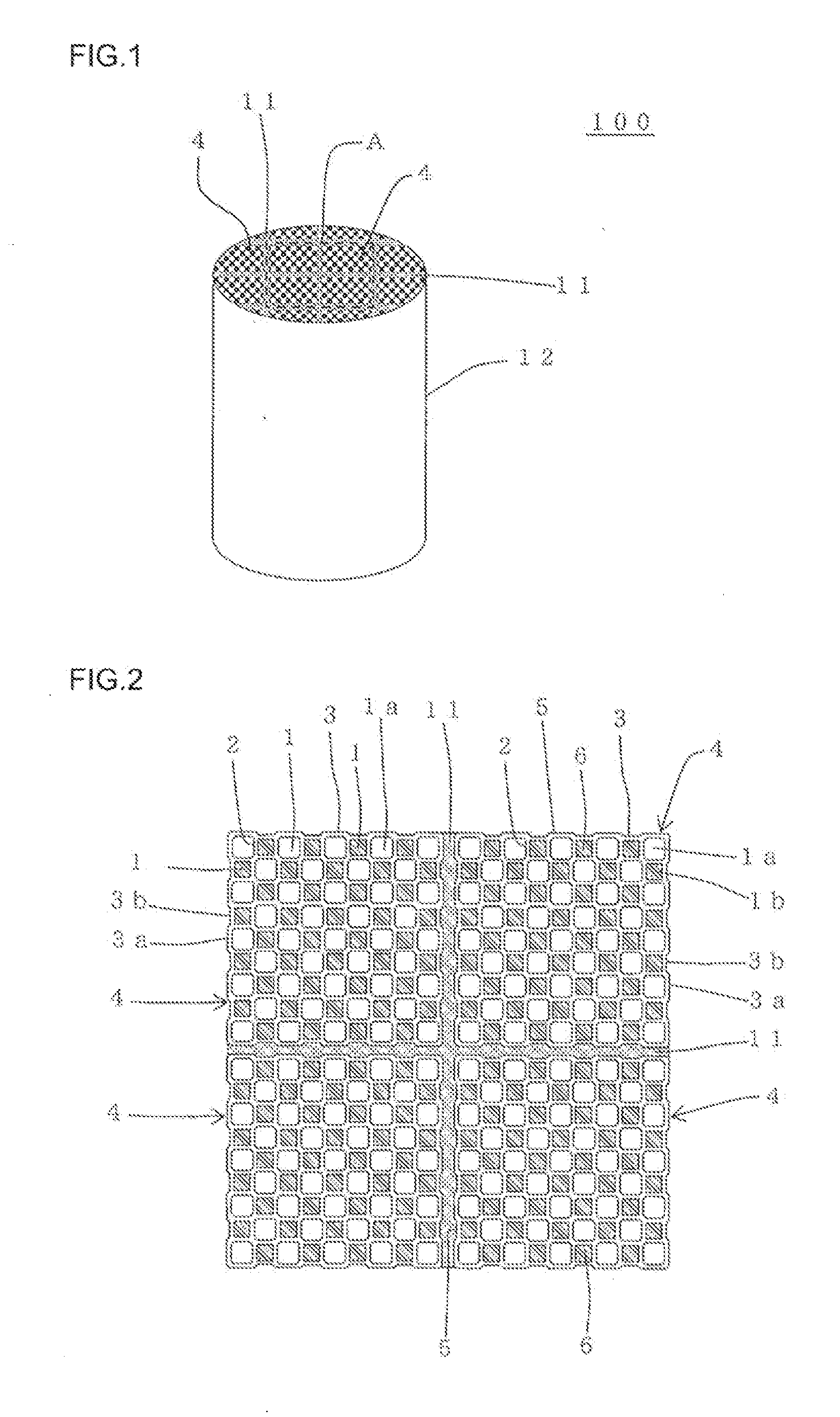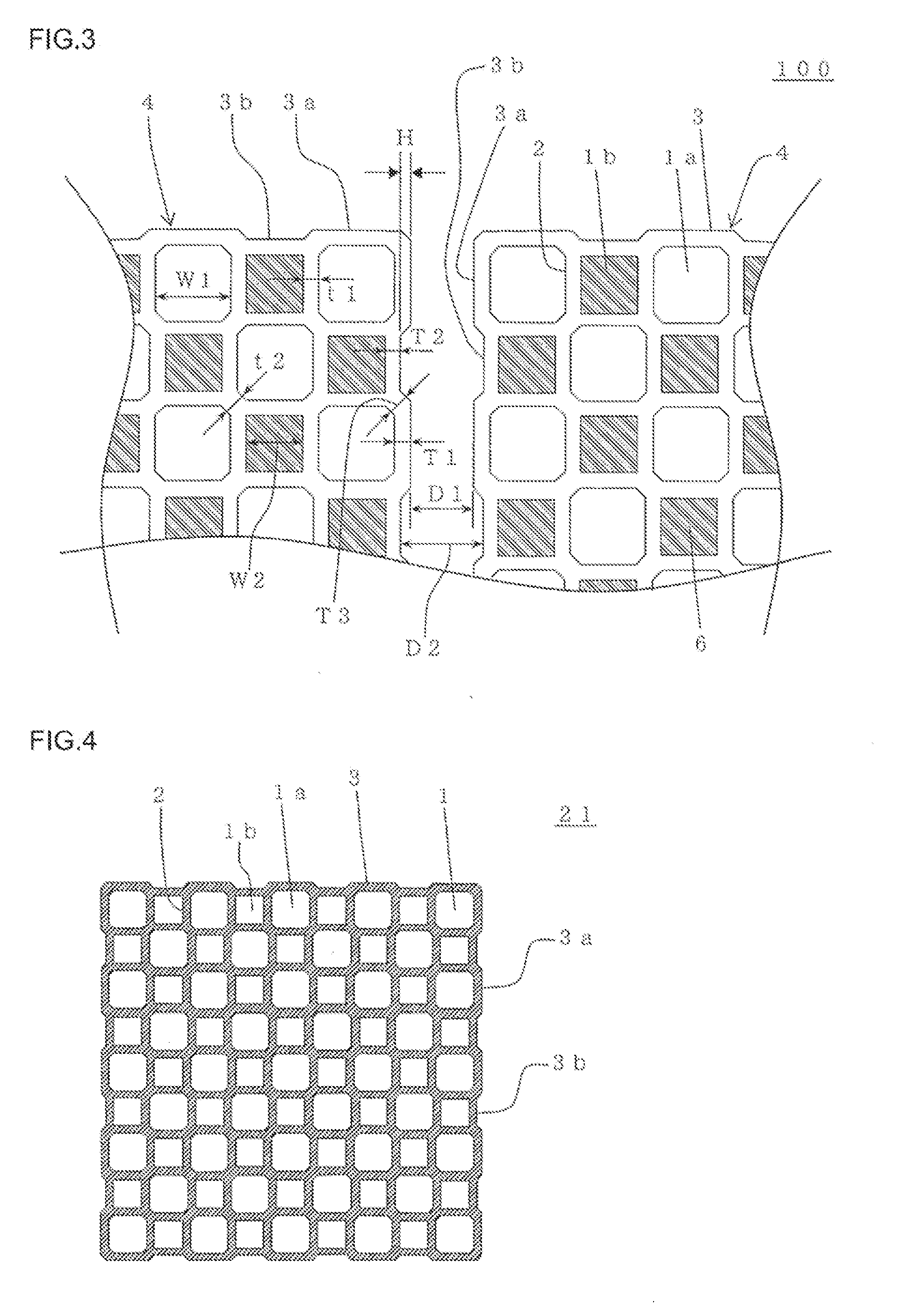Honeycomb structure
- Summary
- Abstract
- Description
- Claims
- Application Information
AI Technical Summary
Benefits of technology
Problems solved by technology
Method used
Image
Examples
example 1
[0059]As the ceramic raw material, a SiC powder and a metal Si powder were mixed at a mass ratio of 80:20, and to the mixture were added methyl cellulose and hydroxypropoxy methyl cellulose as forming auxiliaries, starch and water-absorbing resin as pore formers, a surfactant, and water, followed by kneading with a vacuum kneader to obtain kneaded clay having a quadrangular prism shape by the use of a vacuum kneader.
[0060]The kneaded clay having a quadrangular prism shape obtained above was formed, by the use of an extrusion-forming machine, into a honeycomb formed article, as shown in FIG. 4, having a structure having porous partition walls 2 separating and forming a plurality of cells 1 and the outer peripheral walls 3 located in the outermost periphery thereof, the first cells 1a having a large area and the second cells 1b having a small area in a cross section perpendicular to the central axial direction being alternately disposed, the outer peripheral walls 3 each having protru...
examples 2 to 12 and 15 to 20
[0075]Honeycomb structures were manufactured in the same manner as in Example 1 except that the width W1 of the first cells, width W2 of the second cells, partition wall thickness t1, partition wall thickness T1 of the protruding portions, partition wall thickness T2 of the depressed portions, height H of the protruding portions of the outer peripheral wall, distance D1 between protruding portions, and distance D2 between depressed portions were changed as shown in Table 1. The evaluations for “isostatic strength”, “hot vibration test”, “regeneration limit value”, and “pressure loss” were given in the same manner as in Example 1. The results are shown in Table 1. Incidentally, the number of cells was selected in such a manner that each of the honeycomb segments had a bottom face having an external shape size of about 37 mm×37 mm (measured at protruding portions).
examples 13 , 14 , 21 and 22
Examples 13, 14, 21 and 22
[0076]Honeycomb structures were manufactured in the same manner as in Example 1 except that the honeycomb formed article 21 having the first cell 1a in each of the corner portions as shown in FIG. 4 and the honeycomb formed article 31 having the second cell 1b in each of the corner portions as shown in FIG. 5 were manufactured, that the honeycomb segment 22 formed of the honeycomb formed article 21 and the honeycomb segment 32 formed of the honeycomb formed article 31 were bonded together in such a manner that side faces of the honeycomb segments face each other as shown in FIG. 6, and that the width W1 of the first cell, width W2 of the second cell, partition wall thickness t1, partition wall thickness T1 of the protruding portions, partition wall thickness T2 of the depress ion portions, height H of the protruding portions of the outer peripheral wall, distance D1 between protruding portions, and distance D2 between depressed portions were changed as show...
PUM
| Property | Measurement | Unit |
|---|---|---|
| Height | aaaaa | aaaaa |
| Distance | aaaaa | aaaaa |
| Fraction | aaaaa | aaaaa |
Abstract
Description
Claims
Application Information
 Login to View More
Login to View More - R&D
- Intellectual Property
- Life Sciences
- Materials
- Tech Scout
- Unparalleled Data Quality
- Higher Quality Content
- 60% Fewer Hallucinations
Browse by: Latest US Patents, China's latest patents, Technical Efficacy Thesaurus, Application Domain, Technology Topic, Popular Technical Reports.
© 2025 PatSnap. All rights reserved.Legal|Privacy policy|Modern Slavery Act Transparency Statement|Sitemap|About US| Contact US: help@patsnap.com



